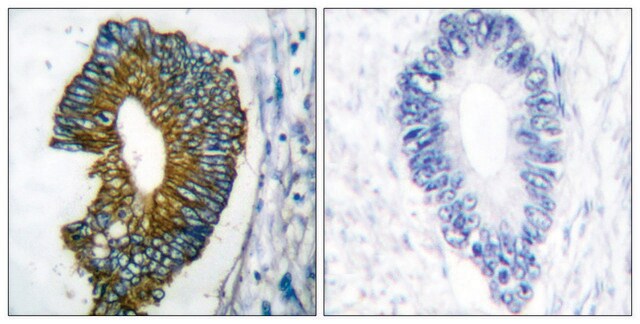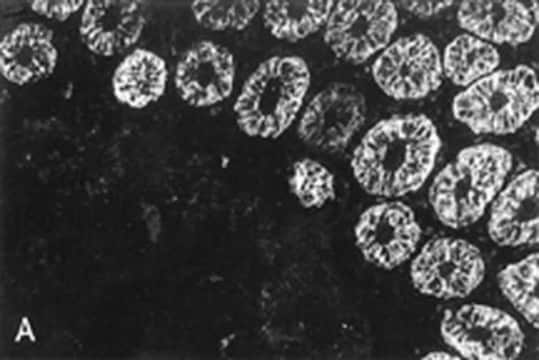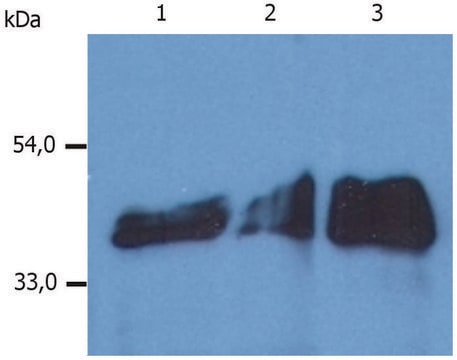MAB3234
Anti-Cytokeratin 18 Antibody, clone RGE53
clone RGE53, Chemicon®, from mouse
About This Item
Recommended Products
biological source
mouse
Quality Level
antibody form
purified immunoglobulin
antibody product type
primary antibodies
clone
RGE53, monoclonal
species reactivity
human, pig, mouse, chicken, canine, rat, rabbit, hamster
manufacturer/tradename
Chemicon®
technique(s)
flow cytometry: suitable
immunocytochemistry: suitable
immunohistochemistry: suitable
western blot: suitable
isotype
IgG1
suitability
not suitable for immunohistochemistry (Paraffin)
NCBI accession no.
UniProt accession no.
shipped in
dry ice
target post-translational modification
unmodified
Gene Information
human ... KRT18(3875)
Related Categories
General description
Specificity
Immunogen
Application
Cell Structure
Cytokeratins
Immunohistochemistry on fresh frozen or acetone fixed tissue sections. Formalin fixed, paraffin embedded tissues are not recommended for RGE53.
Immunocytochemistry: (10μg/mL) Light fixation with 4% formalin, 2.5% PFA ( 5-10 minutes room temperature) or acetone. {See, Barrett, et al 2001} Permeabilization with 0.2% triton X-100 in blocking buffer if using formalin or PFA fixations.
Flow cytometry: Acetone fixed/ethanol fixed cells {See Mezosi, E et al, 2002}.
Optimal working dilutions must be determined by the end user.
Target description
Linkage
Physical form
Storage and Stability
Analysis Note
Skin , Pancreas/tumor
Other Notes
Legal Information
Disclaimer
Not finding the right product?
Try our Product Selector Tool.
Storage Class Code
12 - Non Combustible Liquids
WGK
WGK 2
Flash Point(F)
Not applicable
Flash Point(C)
Not applicable
Certificates of Analysis (COA)
Search for Certificates of Analysis (COA) by entering the products Lot/Batch Number. Lot and Batch Numbers can be found on a product’s label following the words ‘Lot’ or ‘Batch’.
Already Own This Product?
Find documentation for the products that you have recently purchased in the Document Library.
Our team of scientists has experience in all areas of research including Life Science, Material Science, Chemical Synthesis, Chromatography, Analytical and many others.
Contact Technical Service








